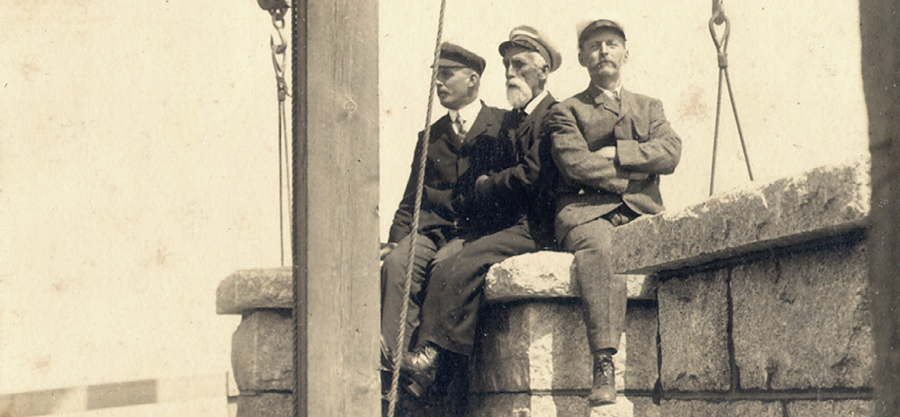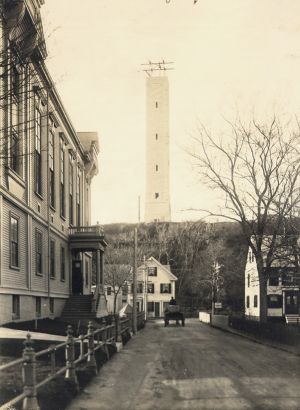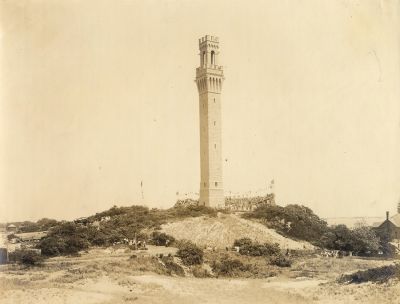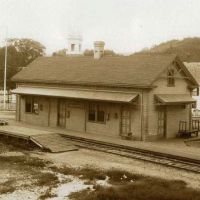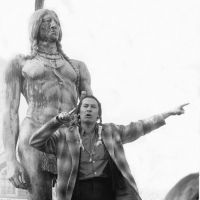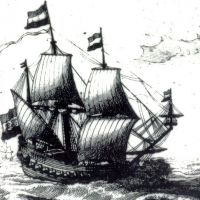Primary Source
10,000 WILL BE ON HAND:
PROVINCETOWN IS PRAYING WEATHER MAY CHANGE
Provincetown is ready for President [Taft]. In her harbor lie more than a dozen warships that tomorrow will belch a greeting to the chief executive when he comes on the Mayflower to dedicate the great monument of Maine granite commemorating the first landing of the Pilgrims that, completed, rears its head 347 feet over the harbor's level.
. . .Under every one of the tight and snug roofs of Provincetown strangers are sleeping tonight. All beds are taken and in many a spare room that is used only on state occasions cots are set up for the visitors.
Preparations for the big day have been going on for a long time. They really began with this spring's house cleanings and annual whitewashings, which were unusually thorough.
. . . About 1:30 the main street presented its high tide of packing and jamming for the day. . . Pedestrians who walked in the roadway because there was no more room on the narrow sidewalk had several hairbreadth escapes from being run down and flattened out by honking juggernauts. The small boys of the town, greatly excited by the unwonted stir, darted in and out of the crowd and whooped joyously. There was much noise and merriment and all the while the heavy, cool wind from the bay filled the streets with its damp and saline breath and fluttered and ruffled the decorations…most gaily.
The Boston Globe, August 10, 1910.


